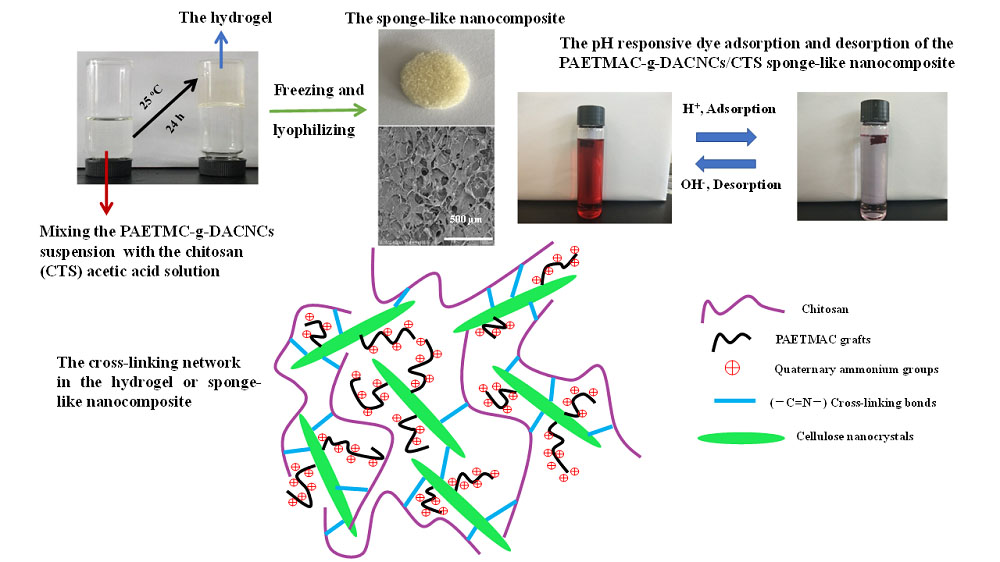Chitosan is a low-cost biopolymer with unique characteristics of biocompatibility, biodegradability, non-toxicity, and non-immunogenicity [
8,
9]. Chitosan offers outstanding adsorption and desorption of negatively-charged dyes due to its amino groups [
10,
11]. However, chitosan cannot function as a solid adsorbent for decolorization of the dye-containing wastewater under acid conditions because it dissolves in acid solutions. Although the chitosan-based gel beads, microsphere, powders, or particles prepared by the cross-linking technique can solve this problem [
10], it is troublesome to separate these adsorbents from the purified water at the end of the dye adsorption process unless they are magnetically functionalized [
12,
13]. On the other hand, the cross-linked chitosan adsorbent in the form of foam, sponge matrices, porous membrane, or aerogel can be better choices for the adsorption of negatively-charged dyes, as they do not require post-treatment like filtration [
14–
16]. In addition, the presence of these rich micro- and mesopores in the cross-linked chitosan can facilitate the mass transfer in the process of dye adsorption. Nevertheless, they still have some shortcomings. Firstly, these adsorbents are not eco-friendly because the poorly biocompatible and highly cytotoxic agents, e.g., glutaraldehyde, tripolyphosphate, H
2SO
4, epichlorohydrin, and dimethyloldihydroxyethyleneurea tetraethoxysilane are often adopted for the cross-linking reaction [
17]. Secondly, the amount of glucosamine that could be accessed by the dyes is reduced because a part of them participates in the cross-linking reaction. In view of the above, other bio-origin reagents with good biocompatibility and low cytotoxicity should be selected as the cross-linker for chitosan to prepare an eco-friendly adsorbent. Meanwhile, cationic groups for immobilization of the negatively-charged dyes should be introduced into the cross-linker to make up the loss of glucosamine of chitosan in the cross-linking reaction. Finally, developing biomass-based reagents that contain both cross-linking groups and cationic groups to compound with chitosan is expected to solve the shortcomings of the existing cross-linked chitosan adsorbents.












